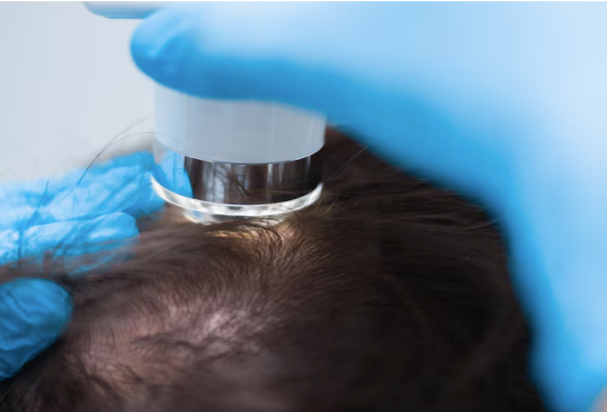As part of your hair’s normal growth cycle, it’s normal to shed a little hair every day. Most people maintain a full head of hair, with the lost hair growing back.
To manage hair loss, doctors, especially dermatologists, are essential since they can identify the cause and provide a range of hair fall treatment choices. These could include taking drugs like minoxidil or finasteride, getting a hair transplant or PRP treatment, and taking care of any underlying health issues that might be causing your hair to fall out. These could include taking drugs like minoxidil or finasteride, getting a hair transplant or PRP treatment, and taking care of any underlying health issues that might be causing your hair to fall out.
However, ageing, stress, sickness, hormone changes, and genetic issues can all interfere with your hair’s growth cycle. More hair falls out, but it doesn’t always grow back.
What is Hair loss?
The average healthy person loses up to 100 hairs every day. New hair strands grow and replace the ones you lose as part of your hair’s growth cycle.
The condition is known as alopecia (hair loss) when you begin to lose more hair and either little or none of it grows back. Hair loss comes in a variety of forms and can impact both sexes as well as children. Hair loss may occur on your head alone or throughout your body.
What kinds of hair loss are there?
While some forms of hair loss are transitory, others are permanent. Among the most prevalent forms of hair loss are:
- Androgenic alopecia: This kind of inherited baldness, which includes female hair loss or male pattern baldness, can impact anyone.
- An autoimmune condition known as alopecia areata causes hair loss on both the scalp and body.
- Telogen effluvium: This kind of hair loss is characterised by quick, intense hair loss. Usually, it occurs a few months following a physically or emotionally taxing experience. Abrupt changes in hormones can also cause it.
- Anagen effluvium: This extremely quick hair loss is brought on by some medical procedures, such as chemotherapy.
What is the prevalence of hair loss?
The most prevalent kind of hair loss is androgenic alopecia, or baldness. In the United States, roughly 80 million people are impacted.
One of the most frequent adverse effects of chemotherapy is hair loss. Up to 6.8 million Americans suffer from alopecia areata.
Why do people lose their hair?
There are numerous potential causes of hair loss. Among the most typical are:
- Genetically caused hair loss that is inherited from one’s parents.
- Infections caused by fungi on the scalp.
- Tight-pulling hairstyles (such as tight ponytails, braids, or hair extensions).
- Hair products (such as bleach and perms) that could harm hair because of processing.
- Hormonal shifts (e.g., menopause, pregnancy, or childbirth).
- Medical care (including chemotherapy and other drugs).
- Deficits in nutrition, particularly a lack of protein or iron.
- Stressful situations (such as losing a loved one or undergoing surgery).
- Thyroid conditions.
How is hair loss addressed?
The doctor will address the reason for your hair loss if it is due to thyroid disease, hormone imbalances, medication, or diet. Often, hair loss can be prevented by addressing the underlying issue.
Male and female pattern hair loss, or androgenic alopecia, is the target of the majority of hair loss therapies. Among these therapies are:
Medication: The first line of therapy for thinning hair is typically over-the-counter drugs that you apply topically, like Rogaine® or minoxidil. Only males with male pattern baldness are eligible to use finasteride, also known as Propecia®, a prescription oral drug.
Hair transplant: In order to do a hair transplant, your doctor will carefully pluck hair from the thickest part of your scalp. After that, the provider implants those strands into the area of your scalp where your hair is thinnest.
Platelet-rich plasma (PRP): Your healthcare provider extracts the plasma after taking your blood. This platelet-rich plasma is then injected into your scalp. PRP therapy can promote the growth of new hair and slow down hair loss.

